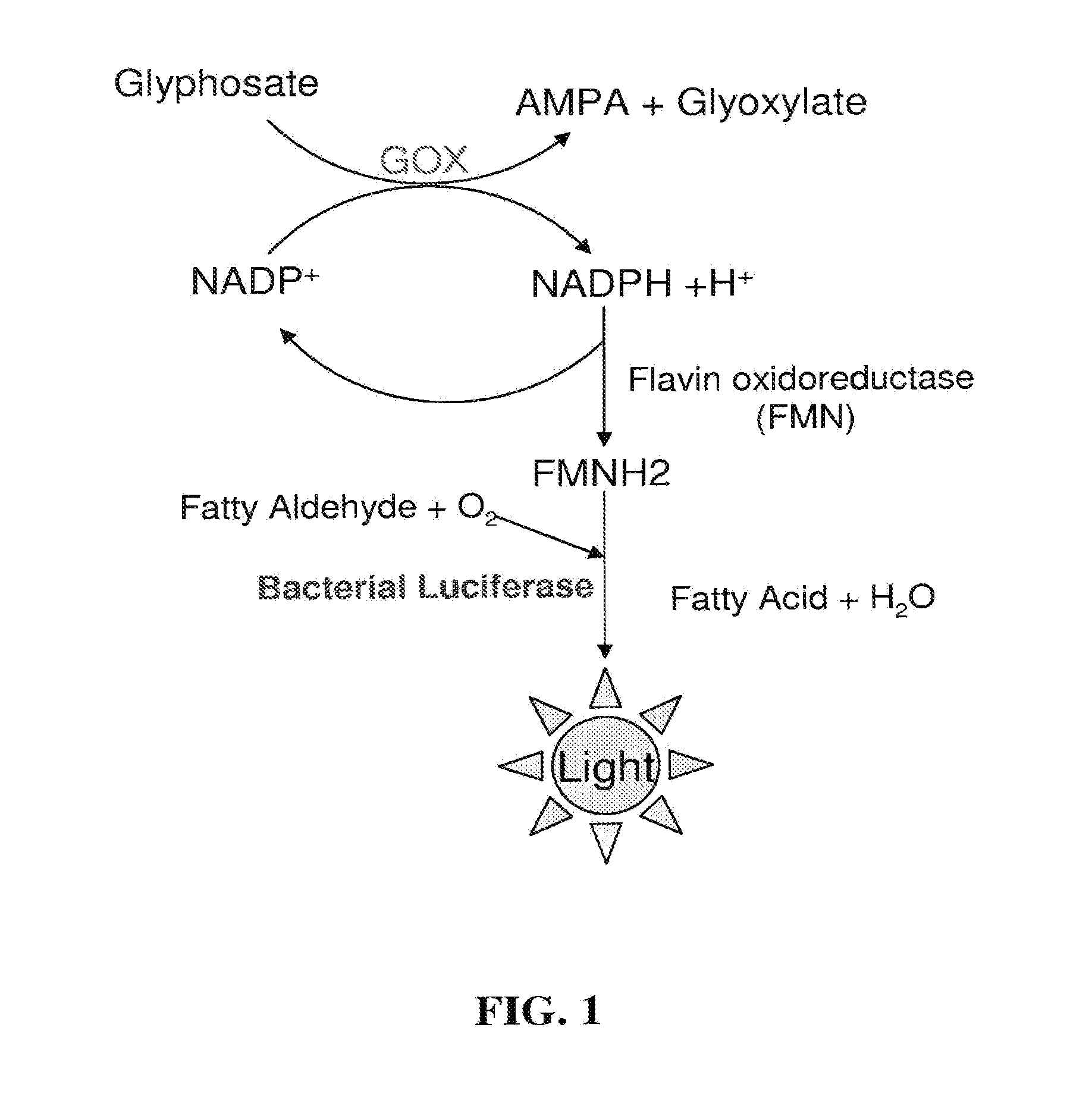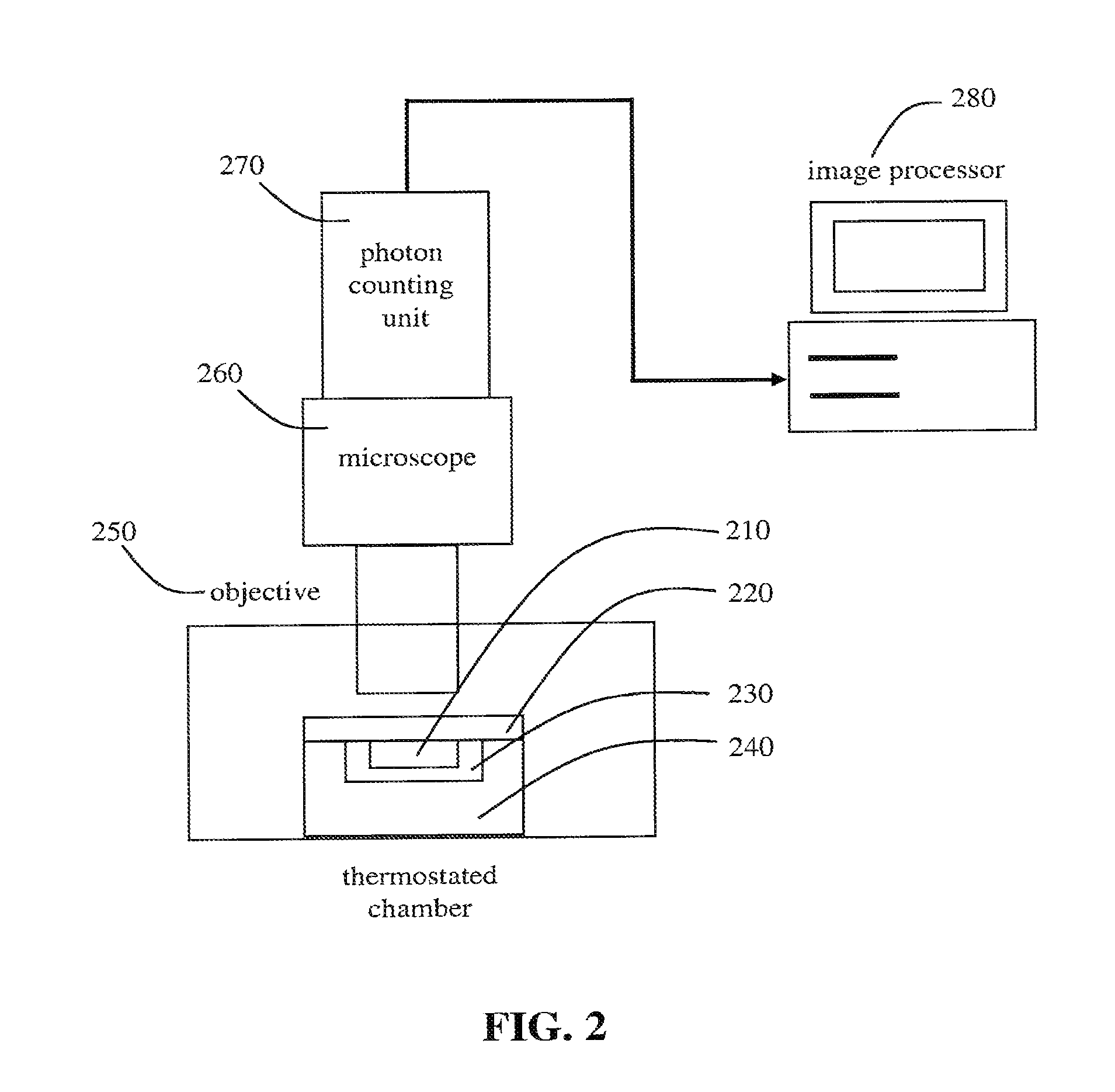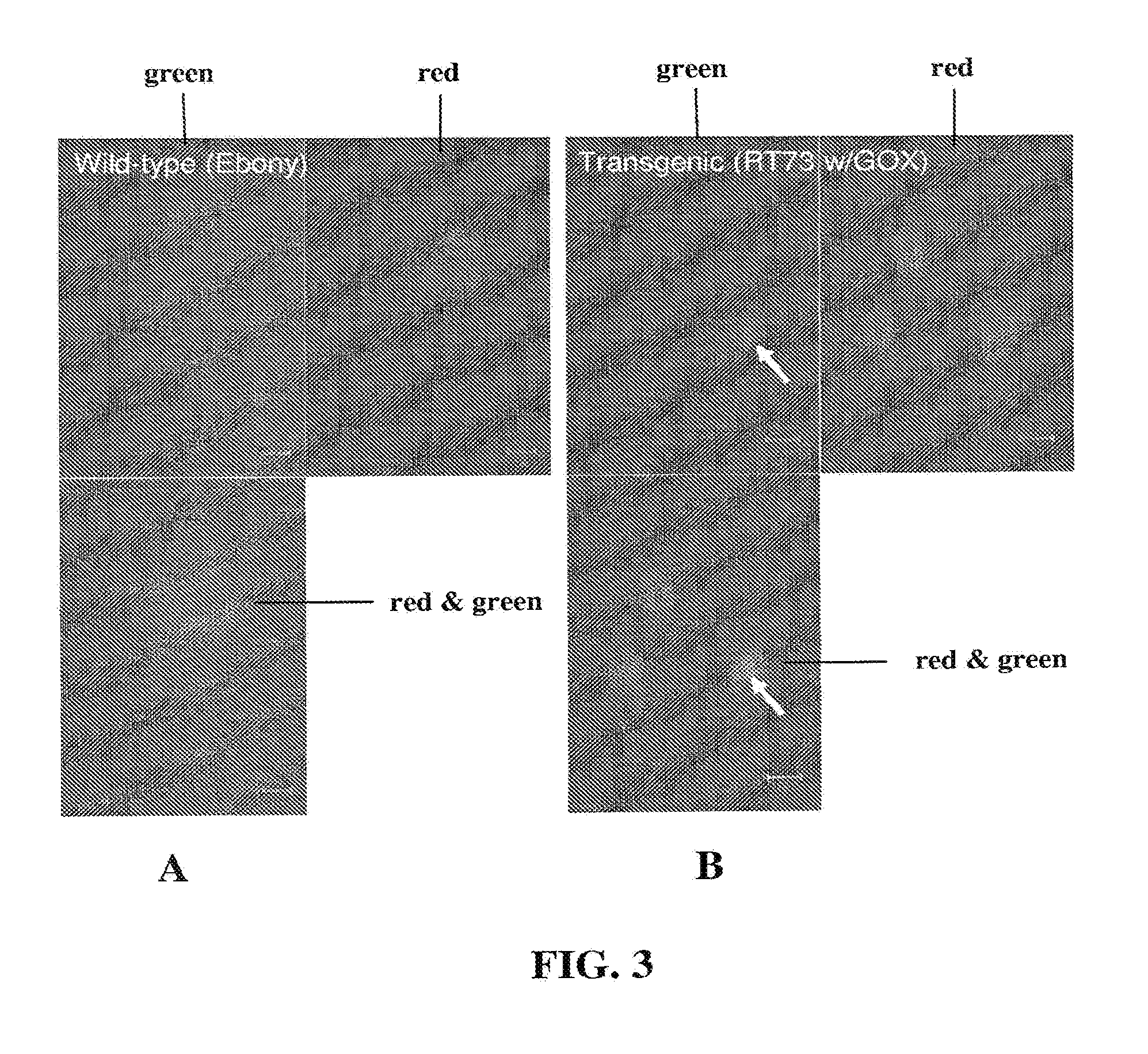Imaging glyphosate in plant tissue
a technology of plant tissue and glyphosate, which is applied in the field of imaging glyphosate in plant tissue, can solve the problems of inability to detect or quantify glyphosate or enzymatic reactions linked to glyphosate in situ, and the herbicidal activity of glyphosate is generally nonselectiv
- Summary
- Abstract
- Description
- Claims
- Application Information
AI Technical Summary
Benefits of technology
Problems solved by technology
Method used
Image
Examples
Embodiment Construction
[0028]Further areas of applicability and advantages will become apparent from the following description. It should be understood that the description and specific examples, while exemplifying various embodiments of the invention, are intended for purposes of illustration and are not intended to limit the scope of the invention.
[0029]The present invention provides compositions, methods, and systems for spatially imaging glyphosate within plant tissue, including cells and organelles of plant tissue, and microorganisms. Plant tissue of interest may be sectioned and applied to microscope slides whereupon an enzyme cocktail is applied to the tissue to provide a bioluminescence reaction. Light detection and quantitation correlates with the amount of glyphosate within the plant tissue. Imaging may be used to ascertain the distribution of glyphosate within the plant tissue at cellular and / or subcellular levels. Quantitative methods may be used to determine glyphosate concentrations relative...
PUM
| Property | Measurement | Unit |
|---|---|---|
| volume | aaaaa | aaaaa |
| volume | aaaaa | aaaaa |
| time | aaaaa | aaaaa |
Abstract
Description
Claims
Application Information
 Login to View More
Login to View More - R&D
- Intellectual Property
- Life Sciences
- Materials
- Tech Scout
- Unparalleled Data Quality
- Higher Quality Content
- 60% Fewer Hallucinations
Browse by: Latest US Patents, China's latest patents, Technical Efficacy Thesaurus, Application Domain, Technology Topic, Popular Technical Reports.
© 2025 PatSnap. All rights reserved.Legal|Privacy policy|Modern Slavery Act Transparency Statement|Sitemap|About US| Contact US: help@patsnap.com



